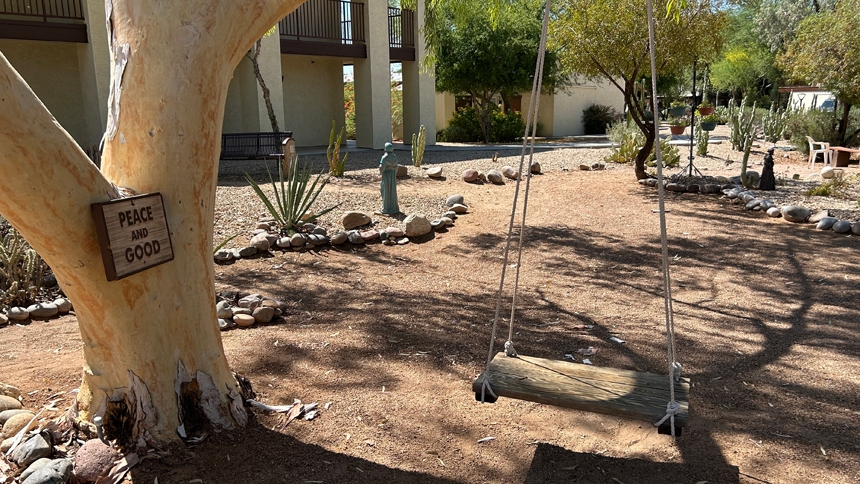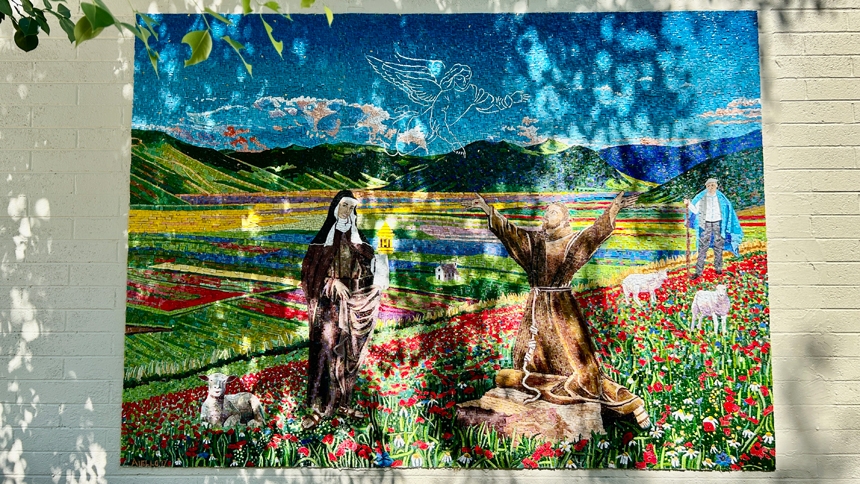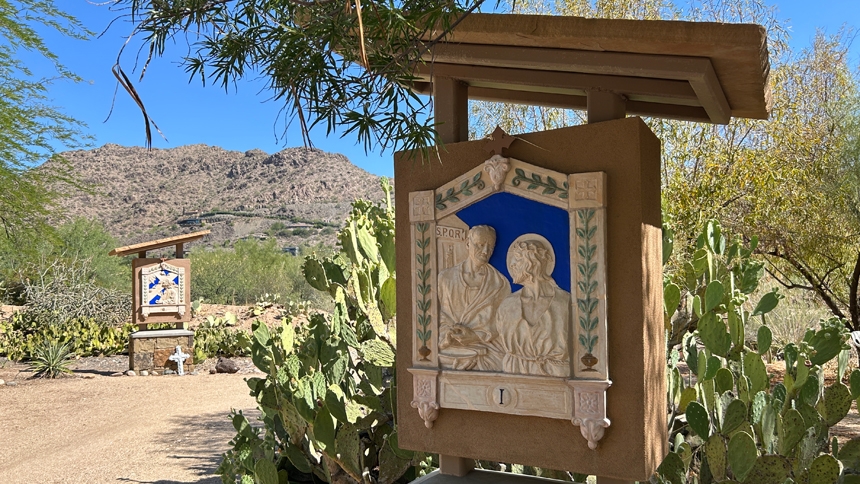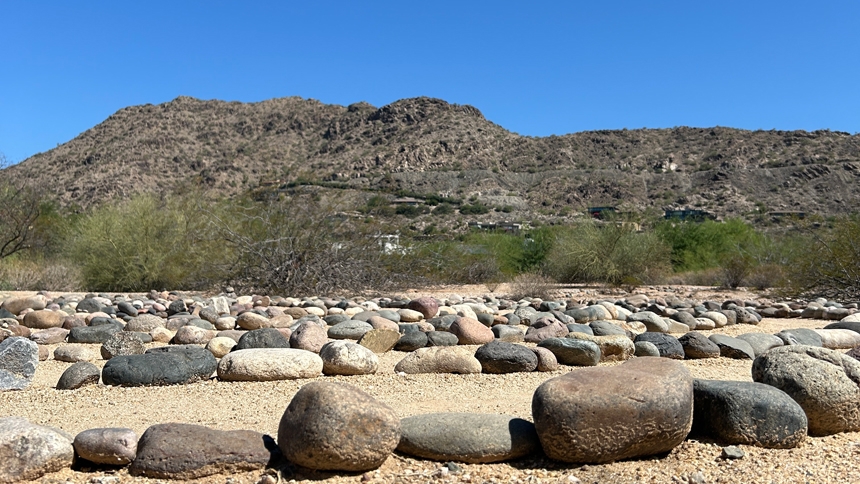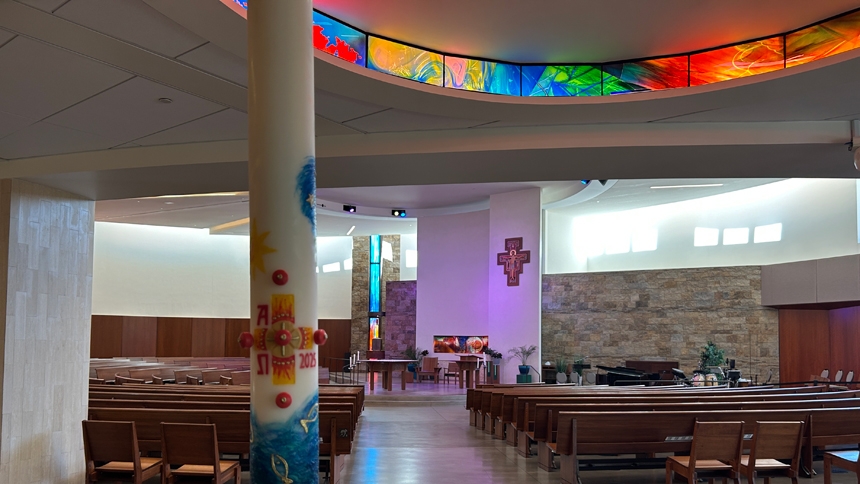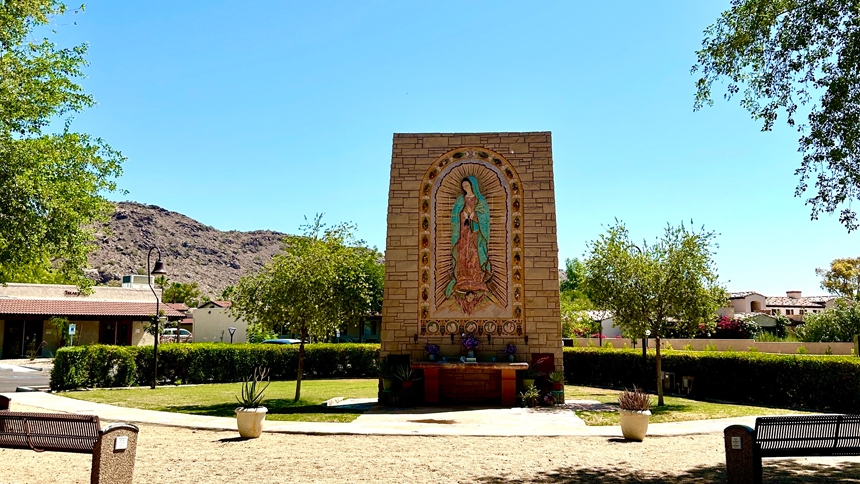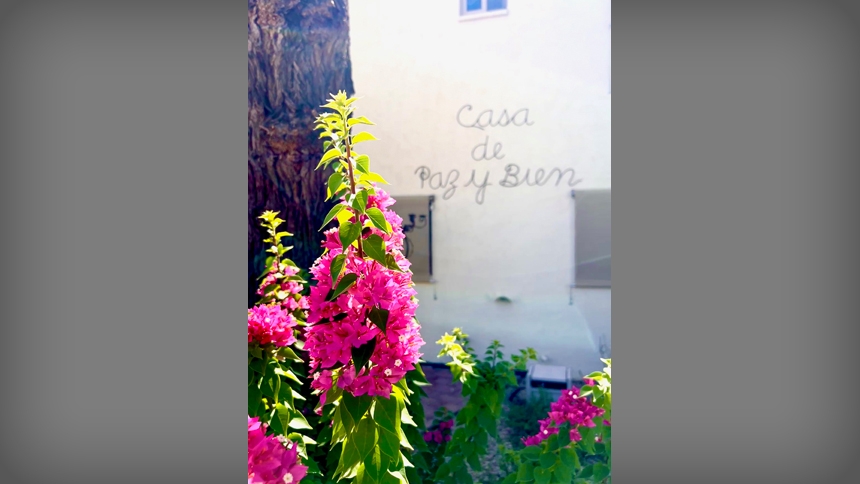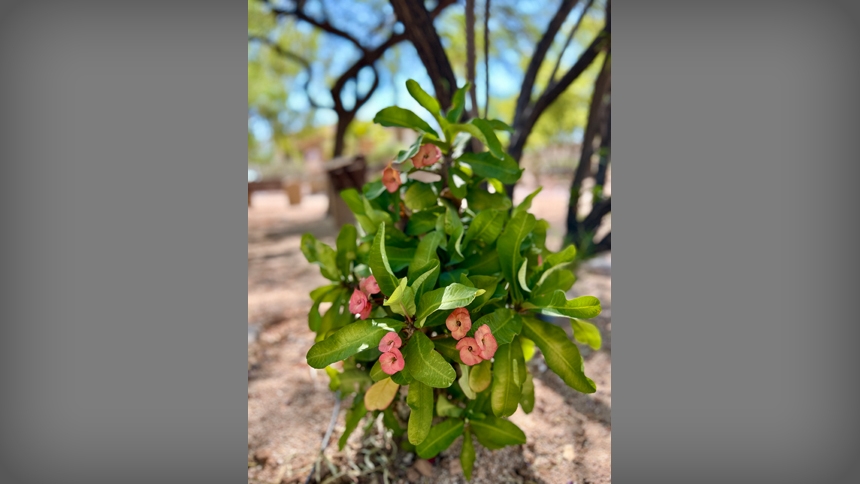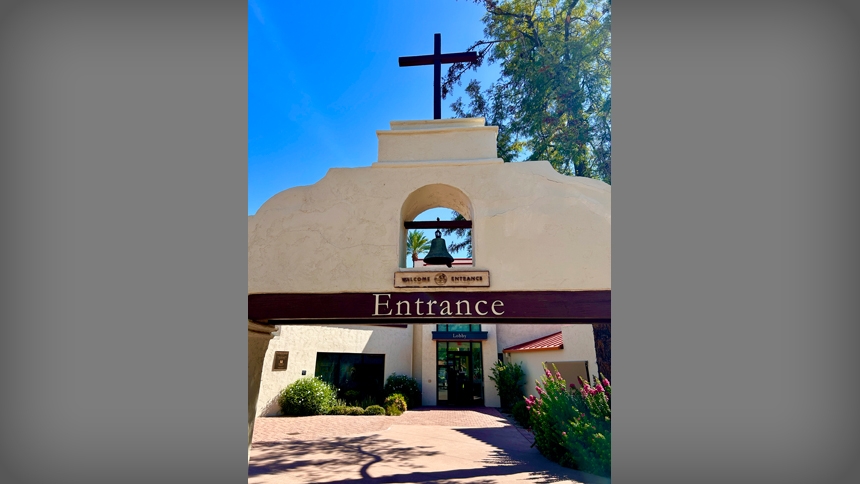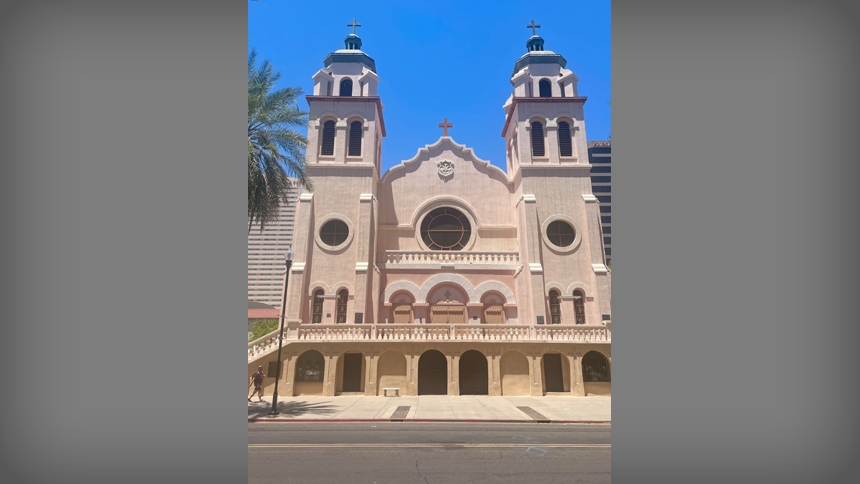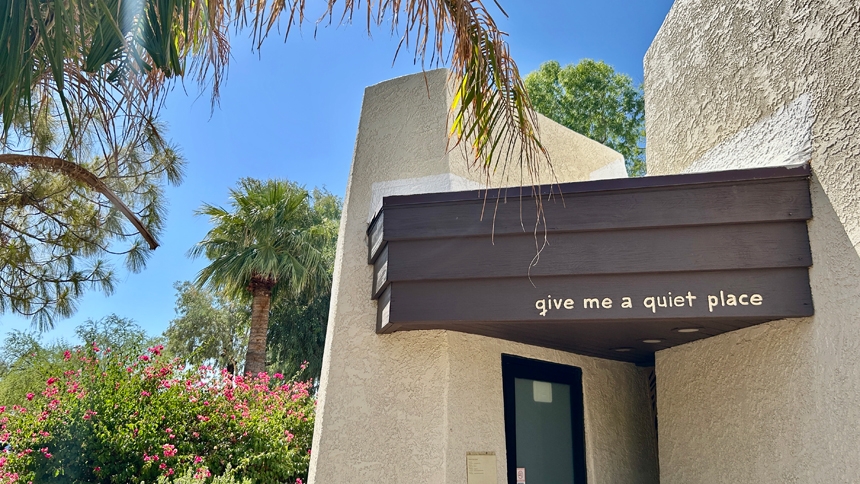
Above: Annually about 130,000 visits to the campus take place, said Patricia Lee, communications director of the center. The number includes those present for retreats, meetings, Mass, special events, individual therapy, support groups, spiritual direction, volunteer activities, art tours and faith sharing groups.
I knew I’d like it as soon as the car pulled up to the entrance. For starters, it had a simple name: the casa.
It also had an official name, but “affectionately-known-as” monikers get to the heart of things quicker.
Red firecracker plants and pink paperflowers lined the sidewalk. Full-sun flora and desert-lizard fauna is how it goes in Arizona. It was late June, and I had been in Phoenix for a media conference, which included Mass at St. Mary’s Basilica, where Pope John Paul II visited in 1987 and spoke to a large crowd from the balcony.
The casa, or Franciscan Renewal Center in Scottsdale, seems far from any town’s downtown.
With Camelback Mountain in the distance and darting hummingbirds up close, it felt like a good place to reflect. With any luck, there’d be something to gain by swapping Raleigh for the Sonoran Desert.
Armed with a water bottle and a giant hat, I had zero agenda that morning. I kept waiting for an employee to ask for my ticket or reservation time. I had neither.
I turned the first corner on the 25-acre campus and there was a mosaic that seemed to tell a story of St. Francis in a farming field. There were rows of colors. I didn’t know what was growing, but he looked happy about it and the angel outline in the sky looked sufficiently pleased, too. A shepherd had his sheep within sight and a woman held something that looked golden. The mosaic scene felt alive.
I’d learn later that the mosaic is titled L’Iniziazione, which translates to “the initiation.” I’d also learn that it depicted St. Francis receiving the Stigmata, or wounds of Christ. The figure in the sky? A seraphim who is the transmitter. The woman? St. Clare, holding the monstrance she used to turn away danger. And the shepherd? The donor. (Per Italian art traditions, donors are often depicted in the works they fund.)
The protagonist of the piece is that living landscape, according to the center’s self-guided art tour, which I took once I got home. The glass used is called smalti. Metal oxides in it create an almost infinite range of color possibilities and the color will not fade.
As the tour description noted, “It is interesting to be reminded that any kind of spiritual experience is always an invisible action. We are unable to see the act while it’s occurring, rather only seeing the effects.”
The casa has a labyrinth, a circular walking path that serves as a spiritual tool. With my bag and phone on a nearby bench, I walked the seven circuits. (I took a second lap to get the photos.)
The dusty earth stuck to my ankles and the stones in muted purples, greens and browns were a guide for reflection and prayer. I remembered helping to create a labyrinth at a retreat center near Durham when I was in high school. The idea of a labyrinth didn’t make much sense to me then. But it did that day in the desert.
I guess there are days we create without knowing the when, where, why and who will walk a route we set a stone for. And there are days we are the conscious travelers.
Maybe it was because no one asked for my ticket, but I felt comfortable. Nearby, a wooden swing was suspended from a tree branch and trying it out was a must. I remembered my childhood and my dad, who used to push me on park swings and do this thing where he’d send me so high that he could run underneath the swing, turn around and laugh. He trusted I wouldn’t kick him in the head, and I trusted he knew how to make it all work.
The center had these blue palo verde trees with green bark. When I got home, I learned the bark allows photosynthesis even when the leaves are shed to conserve water. A deep root system can reach the water table, while shallow roots capture surface moisture from rain. The trees, by way of nectar and seed pods, offer sustenance to bees, birds and other animals.
The casa’s outdoor stations of the cross had a pretty shrub with pale pink flowers. My garden app called it a “prolific bloomer.” My mom called it a “crown of thorns” (its name) when she saw the photo. She said it was a plant Brother Gary, a Franciscan Brother of Brooklyn, used to have in his office when he served at Cardinal Gibbons High School.
The cornerstone of the casa’s church suggests building a dwelling place for God inside of ourselves. Learning from nature and art, walking the path and taking a seat on the swing encouraged that for me. For you, maybe it’s been a visit to a historic site in the Diocese of Raleigh or a stop on a summer road trip that proved to be a faith-filled moment. This issue’s cover story shares the meaningful journey of a Raleigh family to and through the Jubilee’s holy doors, and other articles discuss the journeys we take and the sustenance we need along the way.
In January of this year, Pope Francis told an audience that the Holy Year 2025 would be an opportunity for all. He spoke about how pilgrimages and jubilees can help people start again, recalculate or identify obstacles. Catholic News Service reporter Cindy Wooden covered that audience and the pope’s remarks. She wrote, “‘Even worse than getting lost, though, is not moving at all, he said. ‘We were not made to stand still.’”


